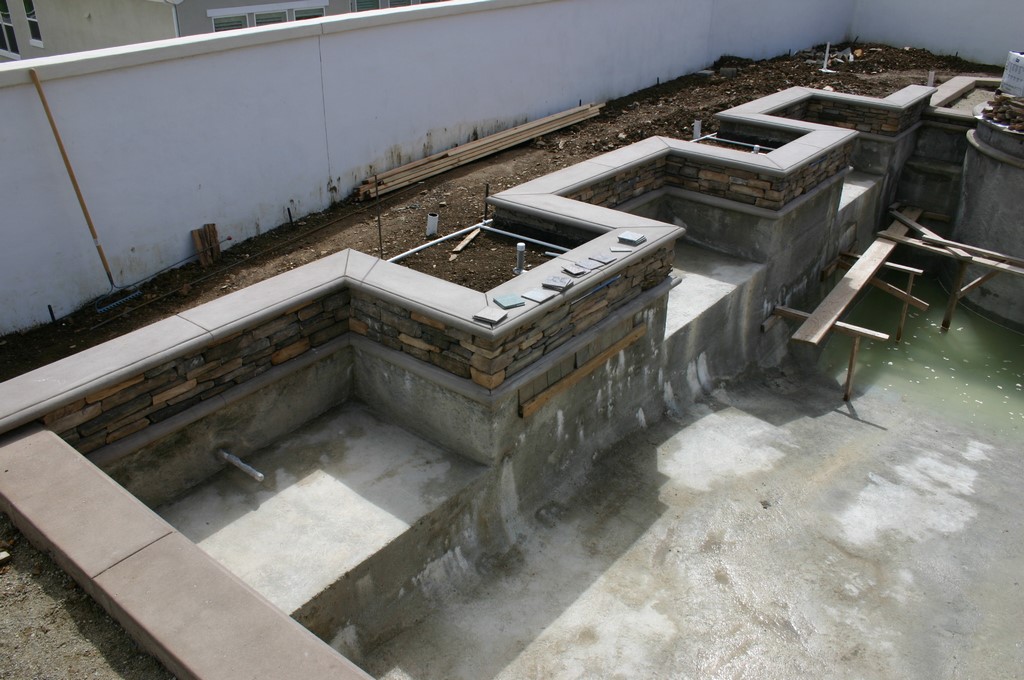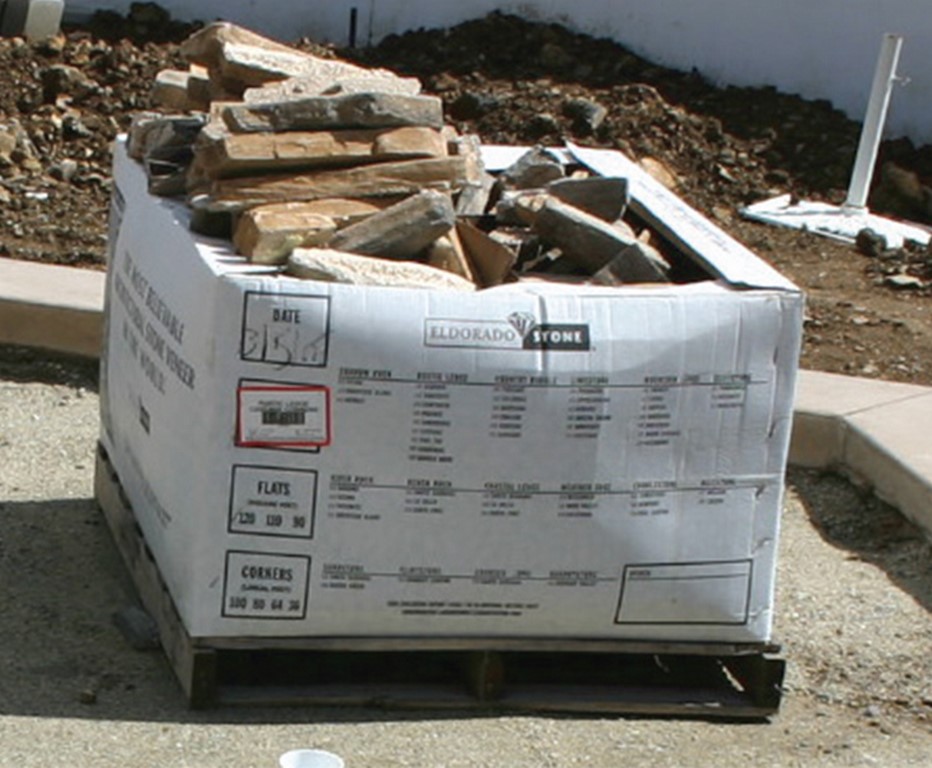All Cracked Up

In recent years, we’ve seen a dramatic increase in the use of faux stone as well as concrete flagstones and pavers. Popular for their affordability and ease of installation as well as the ever-improving realism of their appearance, these materials are widely available for use on decks, pathways and driveways as well as walls, pillars and other architectural features.
We’ve used these products for years and have worked with a number of the leading manufacturers, and overall have been quite pleased with their affordability, durability and variety. I’m a fan, in other words, and see these materials as a welcome and wonderful alternative to natural stone.
But their growth in popularity has a downside: Suppliers are hard-pressed to keep up with demand, and the result is that we often receive products fresh off the factory floor. Although we don’t normally think of freshly made products as a problem, in this case, we ran into a wholly unexpected (and costly) issue.
This was a lesson we picked up through our own operation – and we learned it the hard way.
The scenario: A few years back, we used a popular brand of faux-rock ledger stones to surface a vertical wall. A couple of weeks later, we received a call from the homeowner, who was not happy to report to us that all of the stones — every last one of them – had cracked.
| The faux-stone application process was as routine as could be and we thought all was well with this beautiful little project – until, that is, the homeowner called to let us know that pieces of the concrete-based ledger material were breaking up on surfaces all around the pool and on the fireplace. |
As we quickly realized, it was a case of using new material too soon. These were concrete products, so they needed an adequate curing time – of 28 days, according to most standards. In this case, the manufacturer had hermitically sealed the “stones” in their packaging, anticipating that this would be where most of the curing would take place. Indeed, sealing concrete in a moist environment in that way helps to ensure that the material will cure slowly and properly.
But if, as we did, you use the stones too soon – that is, before they’ve had a chance to cure fully – trouble will surely follow.
I took a look at the surfaces and, as the homeowner said, each of the stones looked as if it were pulling itself apart. I was stumped at first, because the material had been applied to a vertical CMU wall and to a gunite raised bond beam. I could see no reason for the stones to crack due to external forces (because there were none!), so I knew it had to be a problem with the material.
| The material was labeled as having been boxed on March 5, which was interesting but not fully helpful. We applied it on March 15, which clearly hadn’t left it enough time to cure fully – but how were we to know the batch history or the fact that it been boxed so fresh? What we really needed was a “do not use before” date stamp: That would have saved all of us a whole lot of trouble! |
I contacted the manufacturer who assured me the material was up to snuff and that there shouldn’t have been any problems.
Then it dawned on me: The manufacturer had put a “born on” date on the packaging, indicating the day on which the material had been produced. I knew when I’d purchased the material, so the manufacturer was able to check the date and confirm that the material we’d applied had been just ten days old!
So the concrete was still curing when applied and was therefore still shrinking – hence the cracking.
The fix: It took some convincing, but we persuaded the manufacturer to work with us and remedy the situation for the homeowner with an all-new installation with fully aged material.
That was the immediate fix, but I’ve since recommended a longer-term remedy, asking suppliers to ship their products with a “do not use before” date stamped on each box. Knowing when it was made is one thing, but getting a sense of when it’s fully cured is quite another – and more important.
Lesson Learned: Be sure to check the manufactured date of any faux stone products you might be using. If the material is not four to six weeks old (at least), do not use it or it will likely fail.
This is one of those things that are too easily missed if you are not paying attention – and so easily avoided once you’re aware of what can happen.
Scott Cohen is a construction defect expert witness and president of The Green Scene, an outdoor design/construction firm in Chatsworth, Calif. Past articles in the Lessons Learned series have been compiled in his book, The Candid Contractor. He also provides consultation for clients nationwide and gives seminars on designing landscapes, swimming pools and outdoor kitchens. For more information, go to www.greenscenelandscape.com.













